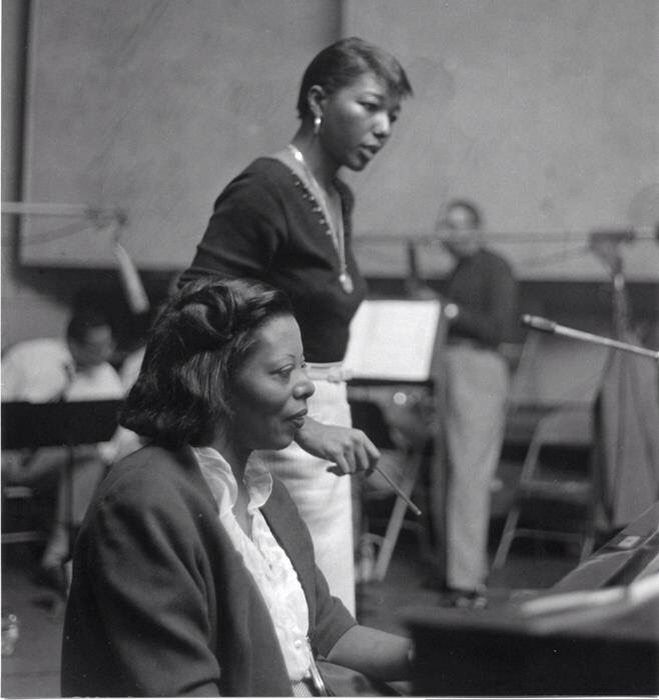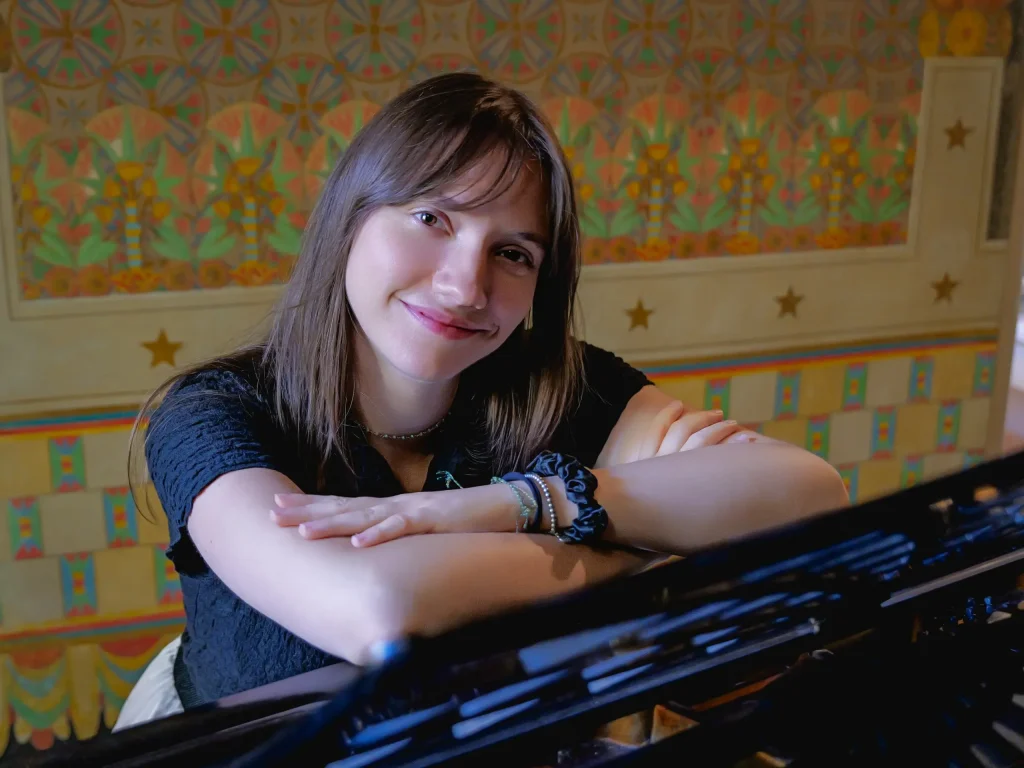Atlanta, Georgia, May 8, 1910
Durham, North Carolina, May 28, 1981


“You got to play, that’s all… working with men… you automatically become strong… though that doesn’t mean you’re not feminine.”
Mary Lou Williams
Mary Lou’s childhood and adolescence
Mary Lou Williams, born Mary Elfrieda Scruggs, was a jazz pianist, composer, and arranger born in Atlanta, Georgia, in May 1910, the second of eight children. She spent her childhood and adolescence in Pittsburgh, Pennsylvania, where she moved with her mother to escape the poverty of the rural South. To this day, the city remains devoted to her, and her name is spoken everywhere.
Her work, as well as her compositions, remains relatively under-analyzed and studied by musicians today. However, this does not diminish her fundamental and unparalleled role in jazz history, nor the fact that she is one of the most influential female figures in the field.
From an early age, she was a musical prodigy, encouraged by her mother, who taught her to play the piano at the age of three. By six, she was urging her siblings to take up music. The following year, Mary Lou began performing publicly, and by the age of twelve, she was playing concerts “on the road.” In her hometown, she earned the nickname “The Little Piano Girl of East Liberty.”
At fifteen, Williams officially began her career as a musician. Music was both a refuge and a means of spreading love within communities marked by fear due to racial segregation, including those that viewed her and her family unfavorably—such as white neighbors who, as the story goes, threw bricks through their windows.
In Linda Dahl’s 1999 biography of Mary, the pianist reflected on her early experiences: “Looking back, I realize that my music acted as a shield, protecting me from being fully aware of the many prejudices around me. I was completely absorbed in my music. Few other things mattered to me.” These “few other things” were her family and the sense of community, which manifested in her efforts to help relatives and fellow musicians in need.
A few curiosities
In Deanna Witkowski’s work Music for the Soul, it is noted that the midwife who delivered Mary Lou told her mother, Virginia Riser, that the baby was born with a “veil” (a small membrane of placenta) over her eyes. In African American culture, it is believed that children born with this veil possess the ability to “see” things others cannot. Her frequent visions, combined with her early musical talent, contributed to Mary’s perception as “different” and helped shape her strong identity and deep awareness.
Since her mother had taken piano lessons from a professional teacher and, as a result, lost her ability to improvise, she warned Mary against making the same mistake. This belief became a cornerstone of Mary’s philosophy—she insisted that jazz could not be formally taught. After learning from her mother, she became entirely self-taught.
Musical and pianistic training
Mary Lou’s biological father was Joseph Scruggs, whom she never knew. Instead, she spent much of her childhood with her stepfather, Fletcher Burley, a blues and boogie-woogie enthusiast who encouraged her to play and compose by buying her a piano. During this time, she learned classical pieces as well as solos by ragtime pianist Jelly Roll Morton and stride piano pioneer James P. Johnson.
At school, she attracted the attention of her teachers, who allowed her to play marches, boogie-woogie, and improvise on popular songs.
Another source of support was Mary’s brother-in-law, Hugh Floyd, an amateur saxophonist. After Mary moved into his home following her sister’s marriage, he often accompanied her to the Hill District, the cultural and musical hub of African American Pittsburgh, where she listened to vaudeville performers and local musicians like Earl “Fatha” Hines.
A particularly influential figure in her development was Jack Howard, who taught her how to emphasize her left hand over her right when playing piano. As Mary later explained, “That’s where the beat and the feeling reside. [The left hand] has to be like a drum, keeping a steady rhythm.”
Most of the pianists she saw around her were men, but one female musician became a major inspiration: Lovie Austin, a pianist from Chicago who regularly performed at a theater on Frankstown Avenue.
In 1924, Williams enrolled at Westinghouse High School, which also saw the attendance of jazz greats like Earl Hines, Billy Strayhorn, and Erroll Garner. However, she soon dropped out to join a traveling vaudeville show called Hits and Bits. Upon returning to Pittsburgh, she began performing solo piano and playing with local bands in various clubs in East Liberty and the Hill District, often ending jam sessions at Subway, a club on Wylie Avenue.
In 1925, she met her idol, Lovie Austin, in Chicago, as well as trumpeter and singer Louis Armstrong.
Personal life
In Cincinnati, a tenor saxophonist named John Williams joined the group Mary Lou was playing with. After hearing her improvise, he began courting her. Initially, she rejected his advances, but eventually, she relented, convinced that her mother would not allow her to continue playing and traveling unless she had male protection.
In later interviews, Mary and John admitted they were not deeply in love. However, under John’s leadership, Mary’s group became a sextet called the Syncopators, which made its way to New York in 1926.
In November 1926, John and Mary officially married despite financial struggles. In 1928, while the couple was in Memphis, Mary even took a job as a hearse driver to earn money. Meanwhile, John joined a band seeking fame in the Midwest: the Clouds of Joy, led by Andy Kirk. When Mary returned to Pittsburgh following her stepfather’s death, John urged her to join him and his new band in Kansas City.

Adventures in the “Paradise City” of Kansas City and her most famous compositions
For Mary, Kansas City became a “paradise city,” filled with “music everywhere in the Black neighborhoods,” albeit mixed with alcohol, gambling, and prostitution. The city offered great opportunities for musicians, and she became an integral part of its distinctive jazz scene, heavily influenced by the blues and the virtuosity of improvisers.
During this time, she developed new compositional ideas by listening to the great big bands of the East Coast, including those of Fletcher Henderson and Andy Kirk. In September 1929, she began working closely with Kirk, who taught her how to arrange for a band. She soon started writing arrangements regularly.
Among her compositions were Walkin’ and Swingin’, Little Joe from Chicago, and Mary’s Idea. Though Williams was not an official member of Kirk’s band, her talent was widely recognized by the leader, fellow musicians, and the executives of a Chicago record label (Brunswick and Vocalion). When the Clouds of Joy’s pianist failed to show up for two recording sessions, Kirk and the studio manager invited Mary to step in.
I suggest you listen to Night life:
And to Roll’ Em:
…To be continued…
Stay tuned for the next two articles to discover more fascinating details about Mary Lou!

